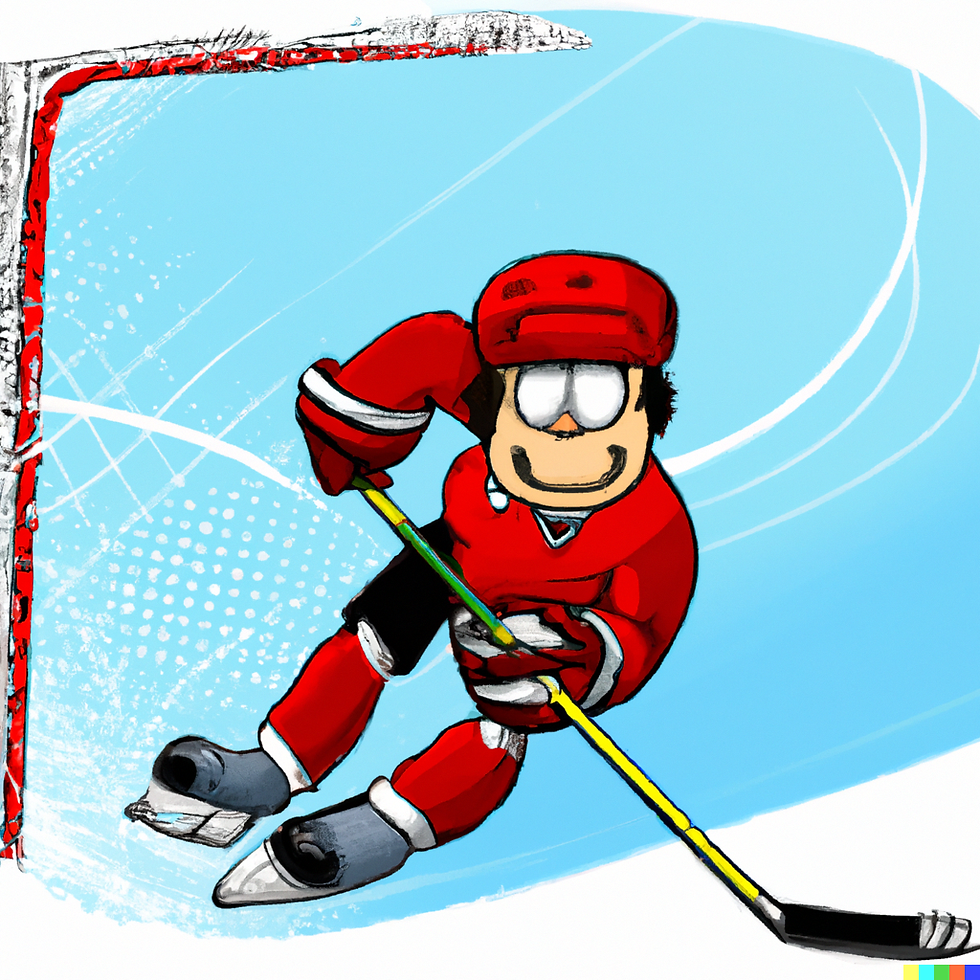Taking Your Shot to the Next Level: Training Tips for Young Hockey Players
- James Witmer
- Mar 18, 2023
- 3 min read
For a hockey player, a strong and accurate shot can make all the difference in their game. Whether it’s a wrist shot, slap shot, or snap shot, having the power and precision to get the puck past the goalie can help a player stand out on the ice. Here are some tips and exercises that can help a hockey player aged 10-16 increase the strength and accuracy of their shot.
Focus on the Fundamentals
Before a player can improve their shot, they need to have a solid understanding of the basics. This includes proper stance, grip, and weight transfer. A player should start by standing with their feet shoulder-width apart, with their knees bent and their weight on the balls of their feet. Their grip on the stick should be firm but not too tight, with their top hand positioned near the top of the stick and their bottom hand about halfway down the shaft. When taking a shot, the player should transfer their weight from their back foot to their front foot as they follow through.
Work on Wrist Strength
A strong wrist is essential for a powerful shot. A player can improve their wrist strength by doing wrist curls with a dumbbell or resistance band. To do this exercise with a dumbbell, the player should hold a lightweight dumbbell with their palm facing up, and curl their wrist up towards their forearm. They can also do this exercise with a resistance band by wrapping the band around their hand and then curling their wrist against the resistance.
Practice Stickhandling
Stickhandling is a great way to improve hand-eye coordination and develop the muscles needed for a strong shot. A player can practice stickhandling by dribbling a puck through cones or around obstacles, or by using a stickhandling ball. This will help them develop quick hands and better control over the puck.
Use a Shooting Board
A shooting board is a great tool for practicing shots at home. It’s a flat surface made of plastic or synthetic ice that simulates the feel of real ice. A player can practice their shots on a shooting board by setting up targets or shooting pucks into a net. This will allow them to focus on their form and accuracy without the distractions of a crowded rink.
Incorporate Plyometric Exercises
Plyometric exercises are great for developing explosive power, which is important for a strong shot. A player can incorporate plyometric exercises into their training routine by doing box jumps, squat jumps, or lateral jumps. These exercises will help them develop the leg strength and power needed to generate a powerful shot.
Work on Core Strength
A strong core is essential for balance and stability on the ice. A player can work on their core strength by doing planks, sit-ups, or Russian twists. These exercises will help them develop the abdominal and back muscles needed for a strong shot.
Incorporate Resistance Training
Resistance training is a great way to build muscle and increase power. A player can incorporate resistance training into their routine by using resistance bands or weights. They can do exercises like bicep curls, shoulder presses, or tricep extensions to build upper body strength, which is important for a powerful shot.
Practice, Practice, Practice
Finally, the most important thing a player can do to improve their shot is to practice as much as possible. They should spend time on the ice shooting pucks, practicing different types of shots, and working on their accuracy. They should also take advantage of off-ice training opportunities, such as shooting boards, resistance bands, and plyometric exercises.
By focusing on the fundamentals, working on wrist strength, practicing stickhandling, using a shooting board, incorporating plyometric exercises, working on core strength, incorporating resistance training, and practicing as much as possible, a hockey player will make tremendous strides in improving their shot.








